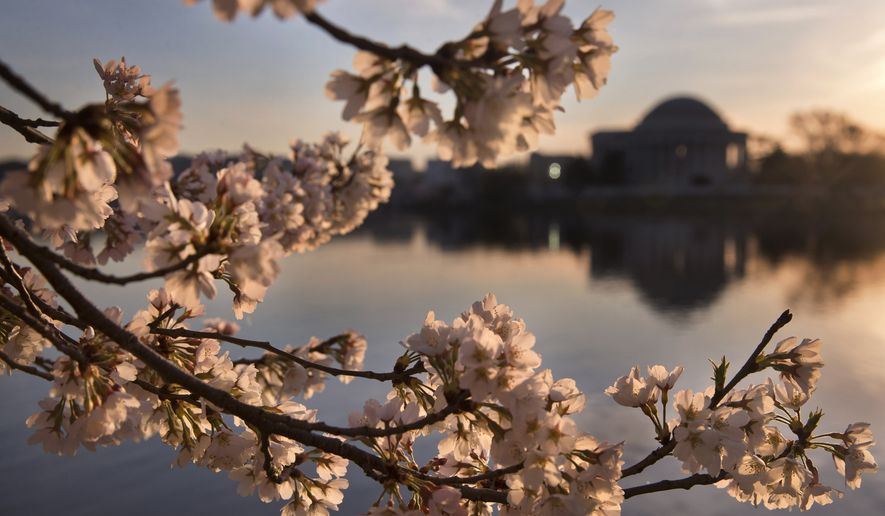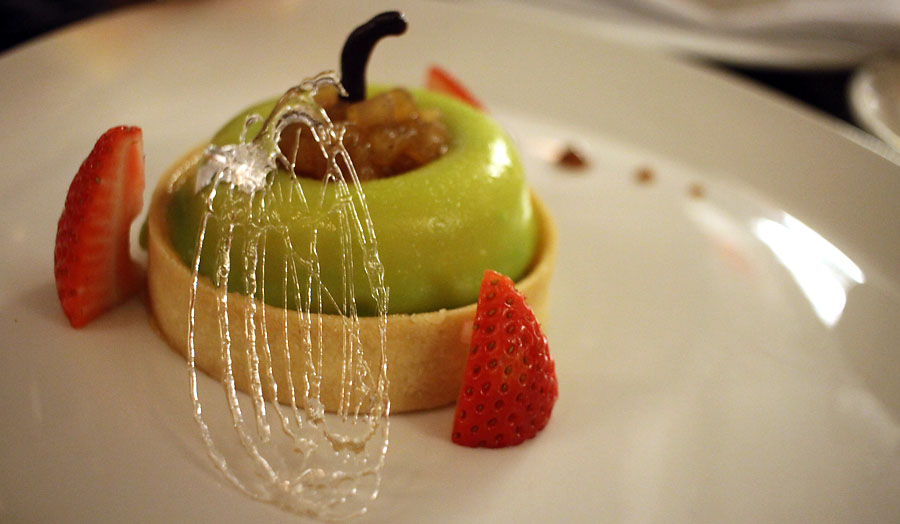March is historic for Pennsylvania Avenue’s Willard InterContinental hotel. This month the D.C. heritage property, just steps from the White House, celebrates the city’s annual National Cherry Blossom Festival and the reimagining of its comfortable cuisine restaurant, Café du Parc.
For those planning to view the cherry blossoms, the National Park Service has announced that the blossoms peak will be from March 17 to March 22.
However, the falling of the blossoms does not stop the spring celebration.
Reimagined Café du Parc
Café du Parc, the hotel’s Parisian brasserie has been reimagined, including an expanded dining menu. Executive Chef Peter Laufer’s joy in unveiling the new menu, including a prix fixe option, is obvious.
The French-inspired menu leans on the cooking techniques and recipes of storied saucier and chef Auguste Escoffier. Escoffier revolutionized French cooking by identifying and simplifying the five “mother sauces” — béchamel, espangnole, velouté, hollandaise and tomate.
The Café du Parc menu is a combination of French standards and new imaginings. Fans of the traditional cuisine will be able to find items like French onion soup with rich caramelized onions and beef bourguignon made with root vegetables found in the fields of France.
Suprême de canard, or pan-roasted duck, with braised in Champagne white cabbage and a cassis (blackcurrant) reduction is new and tempting. There is the rich, herb-crusted lamb with poached lobster and potato croquettes and croque-monsieur.
The classic French bistro grilled jambon (ham) and cheese sandwich with béchamel sauce oozing out the sides is not on the menu. However, the gossip is that you can ask for this treat, and you should.
Café du Parc Prix-Fixe option
The prix-fixe, or Chef’s Choice Tasting Menu ($111 per person with wine pairing, $65 without) will change with the seasons and the availability of the freshest items.
When asked how he creates his plates, Chef Peter Laufer holds up his hand and says: “Every dish has no more than five ingredients.”
The appetizer course brings the meat and succulent head of a crawfish in a light sabayon sauce made with egg yolks and wine. The sauce has the lightest aroma of lemon, highlighted by slim strands of lemongrass.
Chef’s fluke with caviar and saffron sauce is a remarkable surprise — the standout dish on this menu.
Fluke often is confused with flounder, another bottom-dwelling flatfish, and there is not too much of a culinary difference between the two. However, Chef Laufer’ fluke is extraordinarily light, crisp on the outside with a moist, savory interior.
Dressed in a saffron and butter sauce, the dish’s aroma reaches the diner before being placed on the table. Served with a Bordeaux Clarendelle that features the Semillon and Sauvignon blanc grape. The Clarendelle is very balanced and does not overpower the delicate saffron and fish, but it is far from underwhelming.
The meat course features homemade duck sausages with filet of veal. The sausage is mildly seasoned and well flavored. Chef’s plate includes filets of veal, perfectly crisp on the outside. Inside, the firm pink meat is moist and sweet. This plays well against the duck sausage.
Pastry Chef Jason Jimenez’s Tarte Normande Aux Pommes
A more or less traditional apple tart, Pastry Chef Jimenez’s creative reimagining of this dessert is surprising.
Presented as a single tart, it looks at first glance like a crisp green apple atop a tartlet. Spooning into the desert, one finds the apple is actually custard, formed and painted to look like an apple. A confit of spiced apple liess atop the custard, which rests on a tartlet filled with a not-too-rich caramel mousse.
Chef Jimenez’s subtle hand put the slightest essence of pumpkin into a crème brûlee served with a crunchy and delightful Southern pecan crisp with seasonal berries. The pecan crunch alone is not only fun to eat but delicious.
The Williard’s Café du Parc offers a great starting point to discover the history of the iconic building and the history of the Cherry Blossoms.
The Willard, circa 1860
Amid the 2018 National Cherry Blossom Festival from March 17 through April 15, The Willard pays homage to spring and first lady Helen Herron Taft as it celebrates Washington’s cherry blossom trees.
In May 1860, The Willard hosted the first ever delegation from Japan to the U.S. At that historic event, three samurai ambassadors led a group of 74 Japanese officials to Washington and The Willard. Their task was to ratify the Treaty of Friendship, Commerce and Navigation with President James Buchanan.
It was 52 years later that Tokyo Mayor Yukio Ozaki donated 3,000 Japanese cherry blossom trees to commemorate that 1860 event and the friendship between the countries.
First lady Helen Herron Taft oversaw the placement of the trees around the Jefferson Memorial Tidal Basin, planting the first two saplings with the wife of the Japanese ambassador during ceremonies on March 27, 1912.
During the April 13 event, enjoy a bit of history with Ann McClellan, author of “Cherry Blossoms: The Official Book of the National Cherry Blossom Festival.” Ms. McClellan will discuss the initiative spearheaded by Mrs. Taft.
This historic event leading to one of Washington’s most iconic memorials that represent a symbol of peace and friendship between two nations.
Visiting the Basin for hanami
Hanami is an ancient Japanese tradition of meditative viewing of spring blossoms, mostly those of cherry and plum trees. It is so important to the people of Japan that the Japan Meteorological Agency monitors and forecasts the dates of the blossoming.
Along the slightly longer than two-mile loop of the Tidal Basin, there are many stops of historical significance.
Just before the Martin Luther King Jr. memorial (when walking counter-clockwise from the Jefferson Memorial), you will find the 10-foot, 350-year-old Japanese Lantern. Commemorating the opening of trade between Japan and the U.S., the stone lantern was a gift from the governor of Tokyo. It is lit only during the National Cherry Blossom Festival.
A bit past the lantern, you will find the bronze plaque that commemorates the first cherry tree planting, by Mrs. Taft and the Viscountess Iwa Chinda, wife of the ambassador of Japan.
In 1957, the mayor of Yokohama gifted a pagoda (circa 1600) to Washington, D.C. Many boxes, sans instructions, arrived in the nation’s capital. Reassembling the pagoda kept the experts at the Smithsonian Institution busy, as they had only images of pagodas as their guide.
• • •
WHEN YOU GO
Visit the The Willard’s event web page to learn about the various culinary and cultural events that occur during cherry blossom season. From fresh blossom-inspired culinary treats and cocktails to historical speakers, the iconic Willard InterContinental is a treat in and of itself.
The Willard is a short walk from the Metro Center subway station or offers valet parking. From The Willard you can walk across the National Mall, passing the Vietnam Veterans Memorial, the Lincoln Memorial and Franklin Delano Roosevelt Memorial, on your way to the Jefferson Memorial.
Or for about $11, you can take a cab from the Willard to the Tidal Basin.
• Jacquie Kubin is an award-winning travel and food writer and travel editor at Communities Digital News.






Please read our comment policy before commenting.